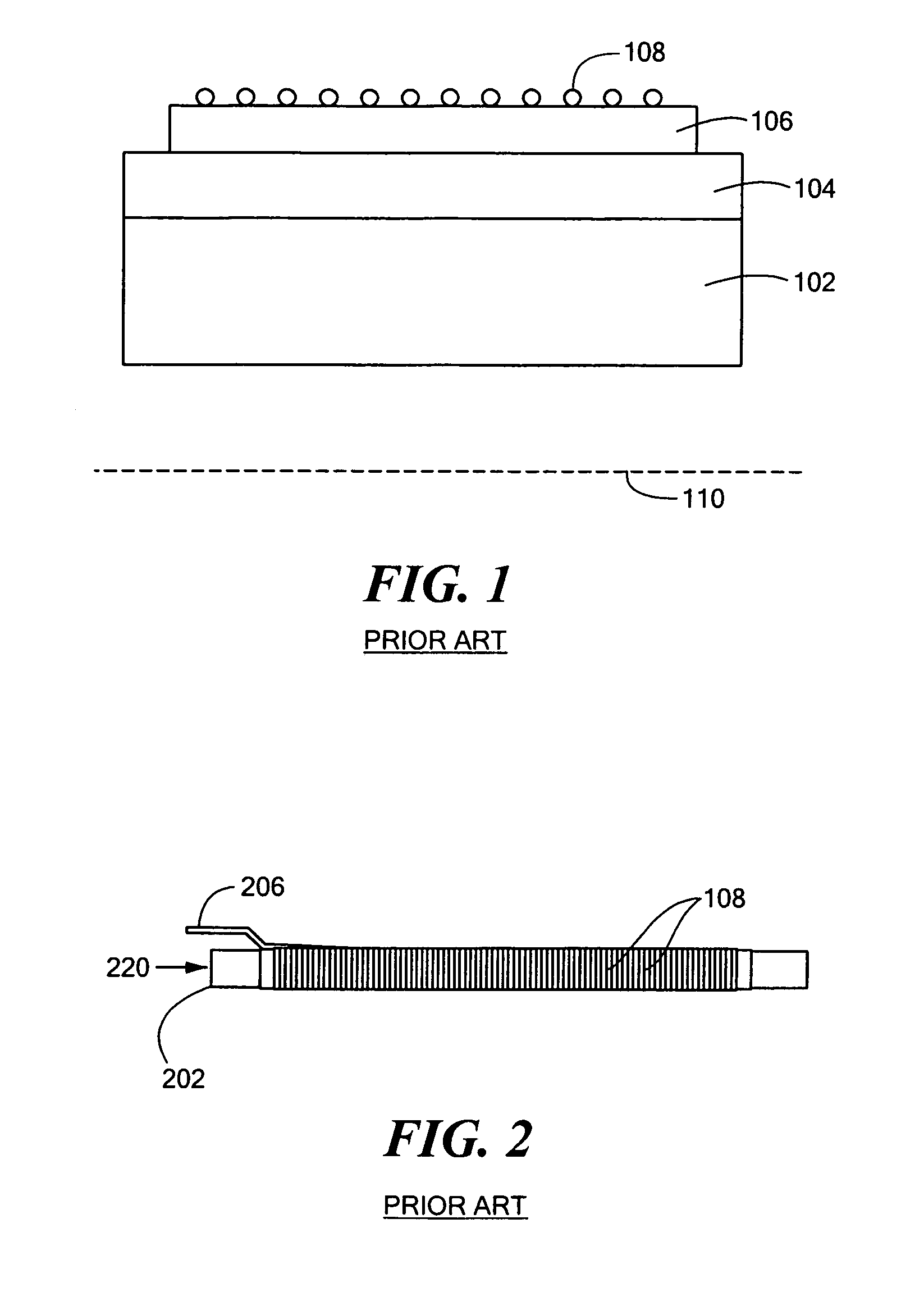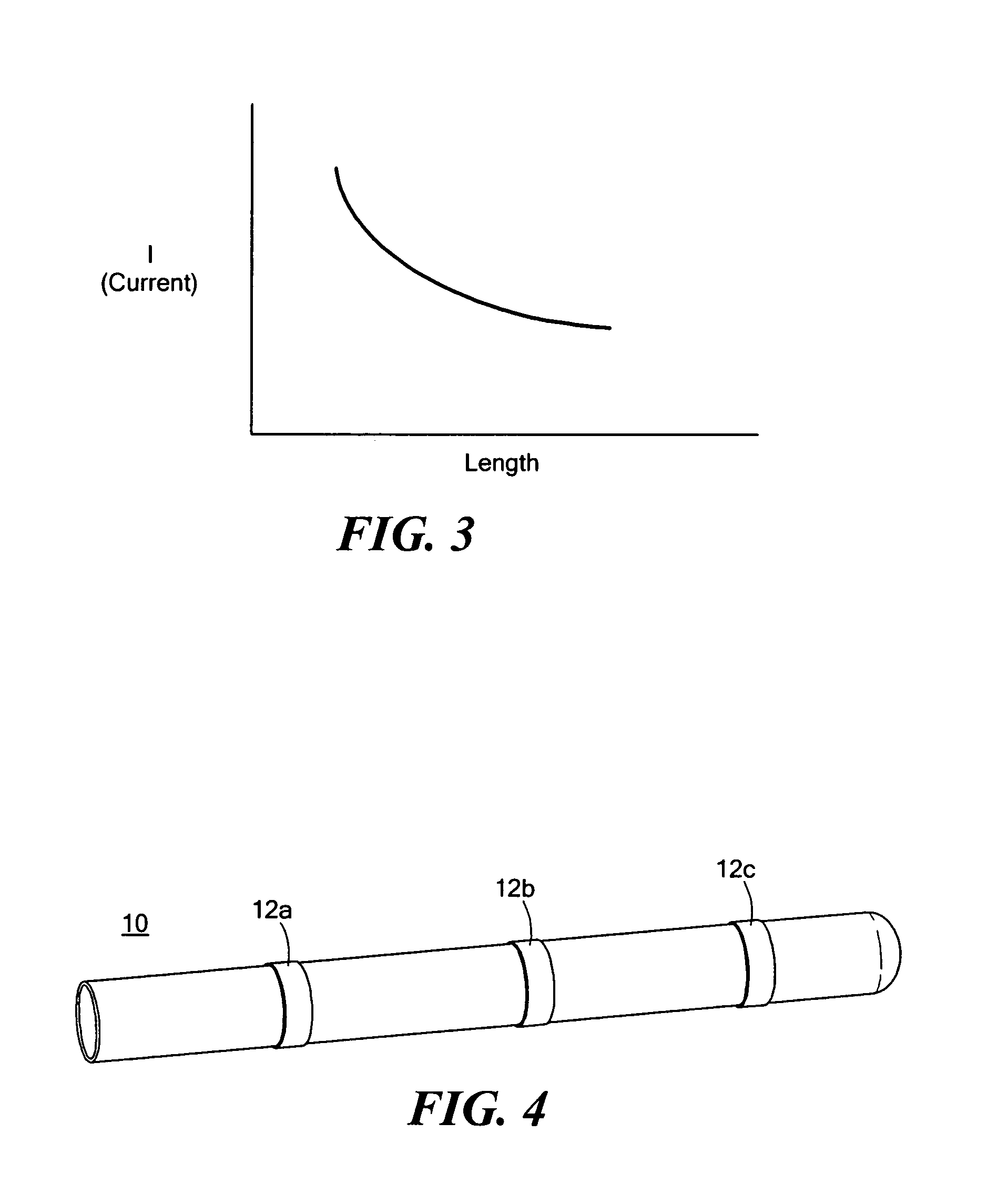Interconnection of bundled solid oxide fuel cells
a technology of solid oxide fuel cells and interconnections, which is applied in the direction of cell components, cell component details, electrochemical generators, etc., can solve the problems of large electrical power losses, large system size, and the need for current to travel along the entire length of the tube, so as to improve the density of the fuel cell
- Summary
- Abstract
- Description
- Claims
- Application Information
AI Technical Summary
Benefits of technology
Problems solved by technology
Method used
Image
Examples
Embodiment Construction
[0029]U.S. provisional patent application No. 60 / 750,569 filed on Dec. 15, 2005 is incorporated by reference herein in its entirety.
[0030]Embodiments of the present invention use multiple electrical connection points along the outer surfaces of the fuel cells to make electrical connections directly between fuel cells so that the manifold does not need to be used in current collection. Among other things, such direct electrical connections allow multiple fuel cells to be closely packed, in part because the manifold design is not constrained by electrical requirements. By closely packing fuel cells, certain advantages, such as reduced size / volume (and therefore increased power / volume ratio), reduced weight (e.g., due to reduction in manifold and other materials), improved electrical efficiency (e.g., reduced resistance losses, reduced electrical losses between fuel cells, reduced voltage / current variability), improved thermal efficiency (e.g., lower thermal losses), ease of manufactur...
PUM
| Property | Measurement | Unit |
|---|---|---|
| angle | aaaaa | aaaaa |
| diameter | aaaaa | aaaaa |
| length | aaaaa | aaaaa |
Abstract
Description
Claims
Application Information
 Login to View More
Login to View More - R&D
- Intellectual Property
- Life Sciences
- Materials
- Tech Scout
- Unparalleled Data Quality
- Higher Quality Content
- 60% Fewer Hallucinations
Browse by: Latest US Patents, China's latest patents, Technical Efficacy Thesaurus, Application Domain, Technology Topic, Popular Technical Reports.
© 2025 PatSnap. All rights reserved.Legal|Privacy policy|Modern Slavery Act Transparency Statement|Sitemap|About US| Contact US: help@patsnap.com



